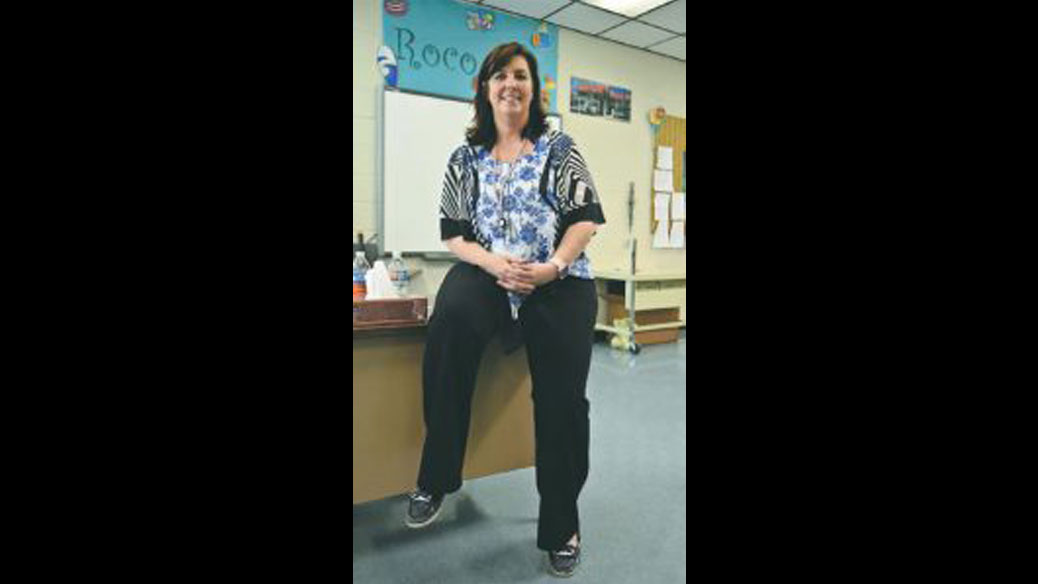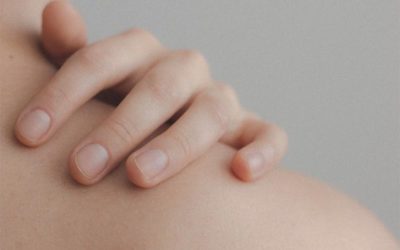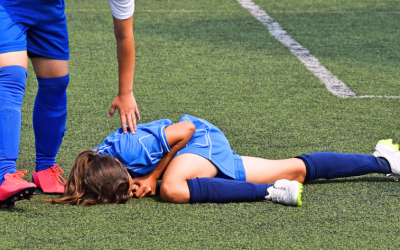Teacher’s diary shows pain-free days were few
Andrea Anderson was hurting – she just didn’t know how much.
But when orthopedic surgeon Paul Yau, MD, urged her to track her hip pain after a cortisone shot, she installed a diary application on her smartphone and began making almost daily notes. “When I look back, I can see that I had no idea,” Anderson said. “I wanted to believe that it wasn’t as bad as I thought. But there were months when I was in pain 25 days out of 30.”
Now, after receiving a total hip replacement last Oct. 21, the 46-year-old Harriman woman uses that same smartphone diary to praise Dr. Yau for ridding her of the pain.
“I LOVE this man! I love him, love him, love him!” she wrote of Dr. Yau, the day after a 45-minute surgery at Fort Sanders Regional Medical Center. “I wrote that because my hip felt great. I wasn’t hurting any more at all, and now I look forward to seeing how many steps I can walk.”
Anderson’s glee was understandable. She had suffered for almost a decade after accidentally stepping into a drainage ditch. A trip to an internist and X-rays failed to show anything unusual. “It didn’t seem like it was a big deal,” said Anderson, who underwent physical therapy and “felt fine.”
But it wasn’t “fine.” The hip would bother her off and on over the next several years, usually easing after physical therapy. When that no longer worked, Anderson, hardly able to walk without pain, sought help from an orthopedic surgeon who specializes in hips and discovered Dr. Yau on the Tennessee Orthopaedic Alliance website.
He first recommended cortisone injections to ease the pain and asked her to go about her normal days as a special education teacher at Harriman High School while keeping a log of how her hip was doing. A handy smartphone app made it easy.
“My post on Feb. 5, 2016, is when I got the shot,” Anderson said as she scrolled through her phone diary. “After a couple of days, I wrote ‘This is great! I’m doing great! Not feeling it at all!’ But then five days later, I wrote, ‘My muscles are kind of tight… something’s going on.’ Then, on Feb. 16, I have this funny picture and ‘My hip is throbbing!’ ”
Despite the pain, Anderson – fearful of surgery – put off a return visit to Dr. Yau for another six months. She kept the diary going, however. And when a new school year ushered in even more excruciating hip pain, she returned to see Dr. Yau.
“I had an appointment Sept. 15, and I wrote in my diary, ‘Hopefully I can just get another shot,’ ” said Anderson. “When I went in, he said, ‘It didn’t sound like it worked.’ And I said, ‘Well, there were good days…’ And he said, ‘Really?!’ Then, I blamed it on the barometric pressure: Don’t you think that’s it? He said, ‘I’ll be honest with you – I don’t think it’s the barometric pressure.’ ”
She began scrolling through her diary, hoping to find good days to tell Dr. Yau about but they were so few she tearfully admitted she needed a total hip replacement.
“She didn’t really know what was wrong but as I listened to her I could tell it was awful,” said Dr. Yau, who discovered necrosis, a disruption of blood flow to the bone, had caused 90 percent of the femoral head of her hip to die and crumble.
“Her hip x-rays were completely normal,” said Dr. Yau. “Then you get this MRI and 90 percent of her hip was either affected or had just died. You don’t really see MRIs like hers.”
In fact, Dr. Yau said that necrosis affects only 8 to 10 percent of his patients, and even then, only 50 to 70 percent of the hip is involved. “Usually, it dies and then it shrinks like a sinkhole or pothole. Hers involved 90 percent of the femoral head but none of it had collapsed. Instead, the base of hers collapsed. What she had was a very unique version.”
Despite the uniqueness of her situation, Dr. Yau was still able to take an anterior approach to Anderson’s hip replacement, resulting in fewer restrictions on her recovery. She spent one day in Fort Sanders Regional before being discharged. “The staff at Fort Sanders Regional were awesome,” she said. “We had a very good group of people who came in to take care of me that night. That whole experience was wonderful.”
She was on a walker for seven days, a cane for three days after that.
“The surgery was life-changing because I had no idea how many parts of my life were affected by how much pain I was in,” she said. “I tried to make myself believe that it wasn’t hurting. I missed out on a lot because of that. I would constantly tell people that I couldn’t do things or go places because I couldn’t do it without hurting.”
Today, Anderson is almost giddy as she goes about her teaching day, making about 10 trips daily down the long hallway to the principal’s office or the lunchroom.
Before her surgery, the fitness watch she wore on her wrist recorded as few as 3,000 steps a day on weekends. Now, she’s walking five times that and eager for more. “I’m like, ‘I can beat that now!’ It’s not that I’m like some ‘sporty’ person – it’s just that I can do it without pain. I love walking here now. I’m doing my job but I’m gaining steps. They have no idea but I get excited when they ask me to come down to the office. I’m like, ‘Yes, I can get more steps in!’ ”
As for Dr. Yau, “I would invite him to a family dinner!’ ” she said recently. “He felt like family to me, that I was being cared for. He made me feel like I was his only patient that day. I wish he was a doctor of other things too because if I ever got sick, I would want to go to him. I trusted him, and I still trust him. I just can’t say enough about him.”




